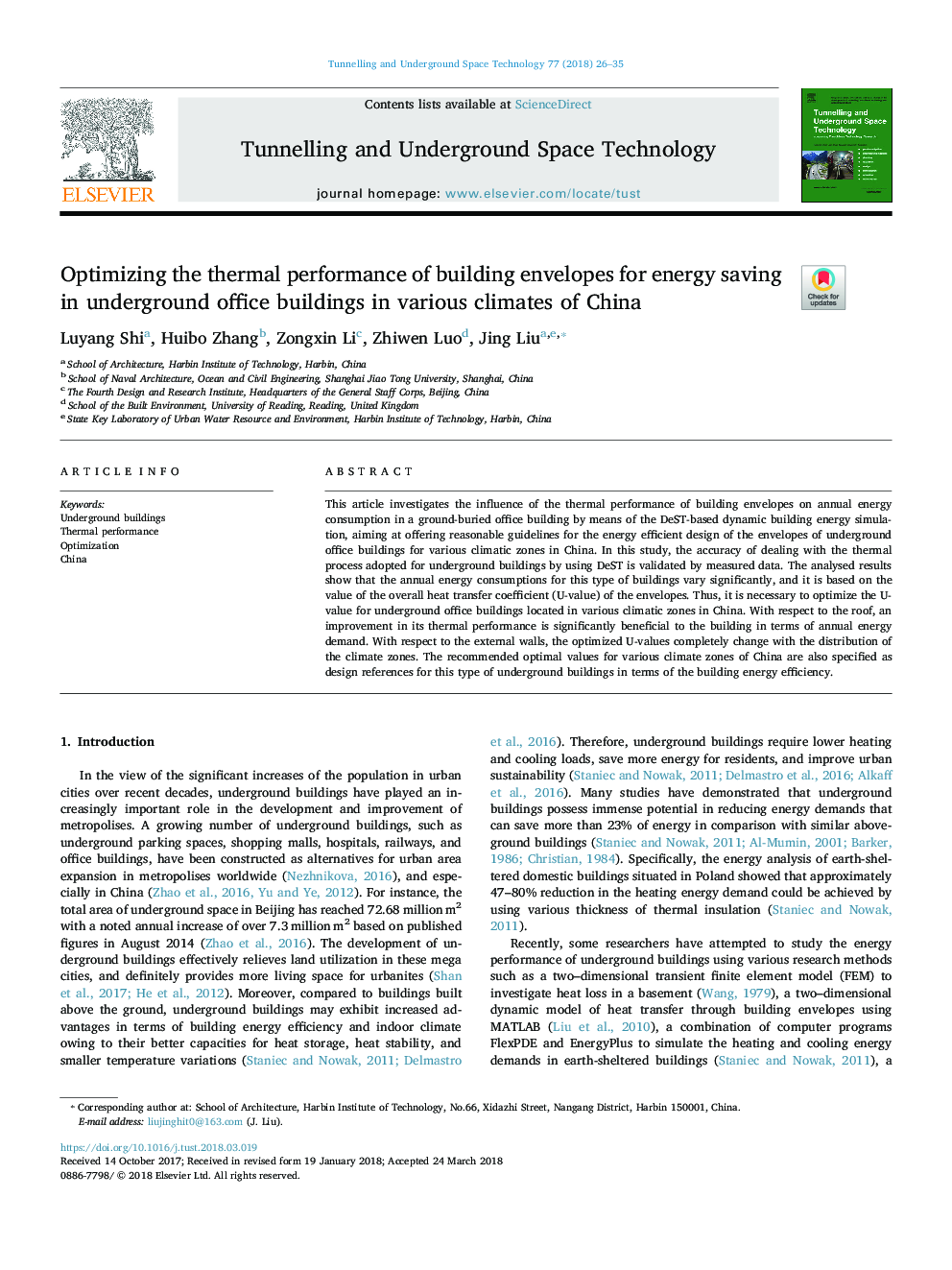| Article ID | Journal | Published Year | Pages | File Type |
|---|---|---|---|---|
| 6782396 | Tunnelling and Underground Space Technology | 2018 | 10 Pages |
Abstract
This article investigates the influence of the thermal performance of building envelopes on annual energy consumption in a ground-buried office building by means of the DeST-based dynamic building energy simulation, aiming at offering reasonable guidelines for the energy efficient design of the envelopes of underground office buildings for various climatic zones in China. In this study, the accuracy of dealing with the thermal process adopted for underground buildings by using DeST is validated by measured data. The analysed results show that the annual energy consumptions for this type of buildings vary significantly, and it is based on the value of the overall heat transfer coefficient (U-value) of the envelopes. Thus, it is necessary to optimize the U-value for underground office buildings located in various climatic zones in China. With respect to the roof, an improvement in its thermal performance is significantly beneficial to the building in terms of annual energy demand. With respect to the external walls, the optimized U-values completely change with the distribution of the climate zones. The recommended optimal values for various climate zones of China are also specified as design references for this type of underground buildings in terms of the building energy efficiency.
Related Topics
Physical Sciences and Engineering
Earth and Planetary Sciences
Geotechnical Engineering and Engineering Geology
Authors
Luyang Shi, Huibo Zhang, Zongxin Li, Zhiwen Luo, Jing Liu,
